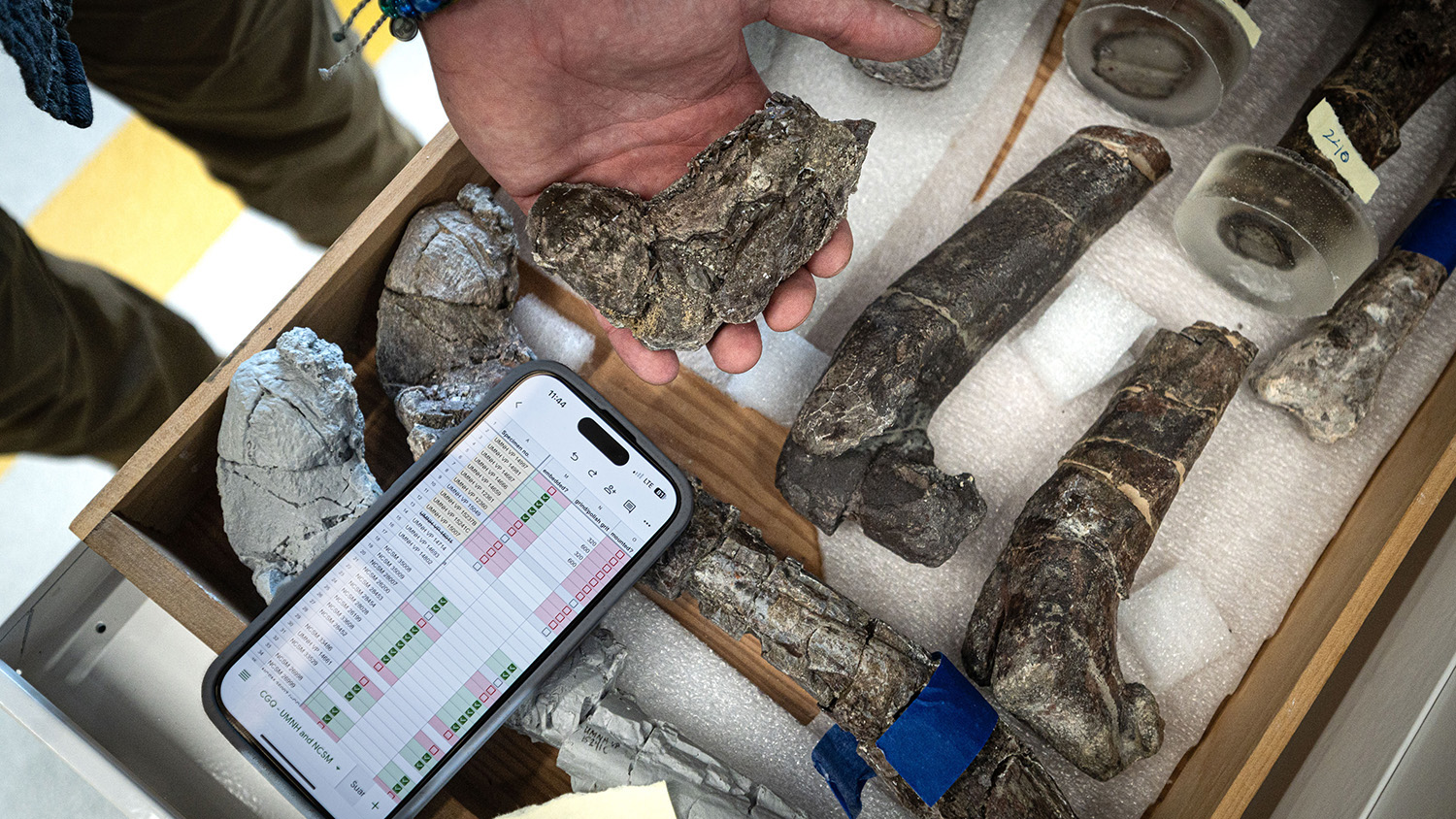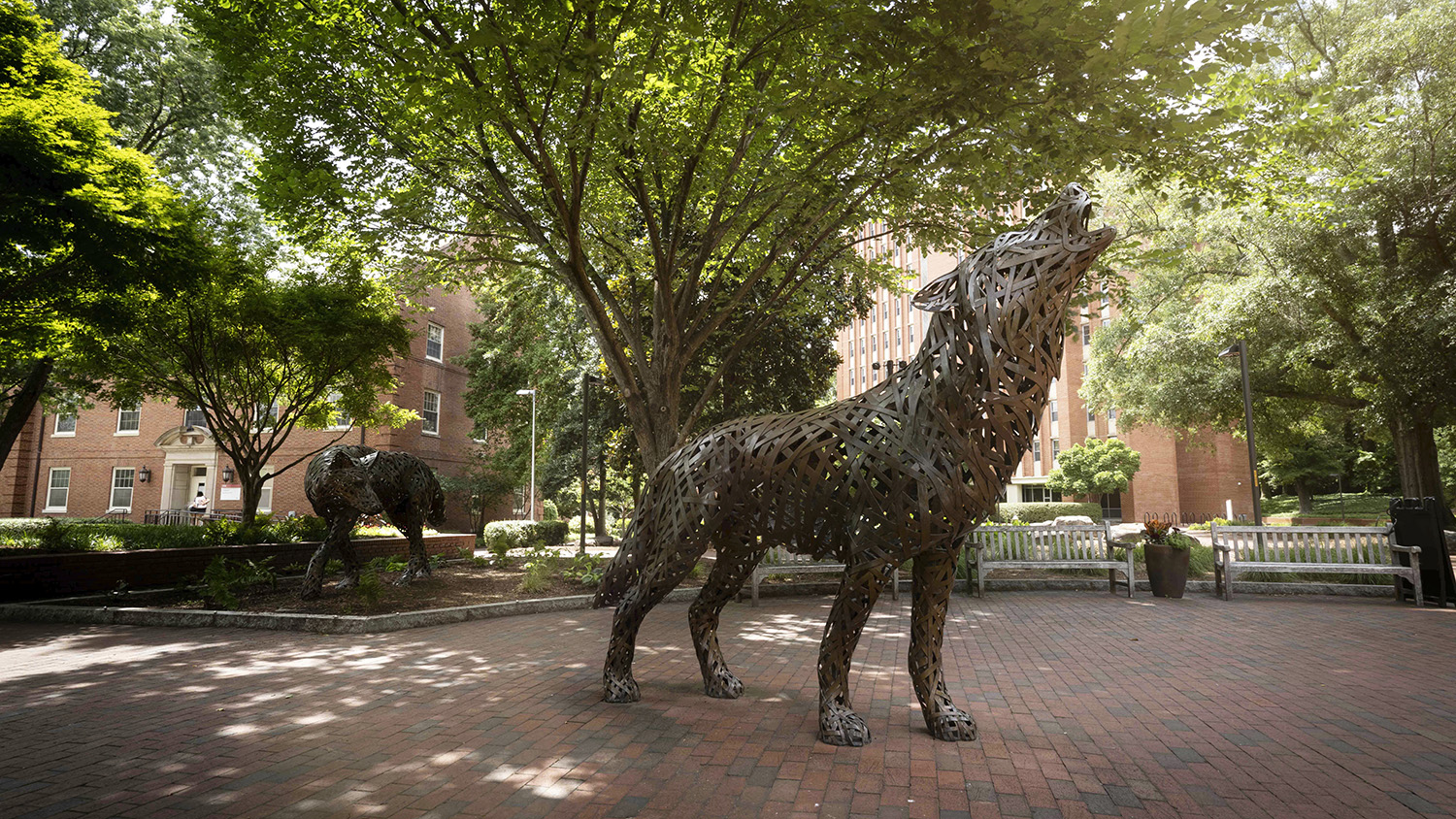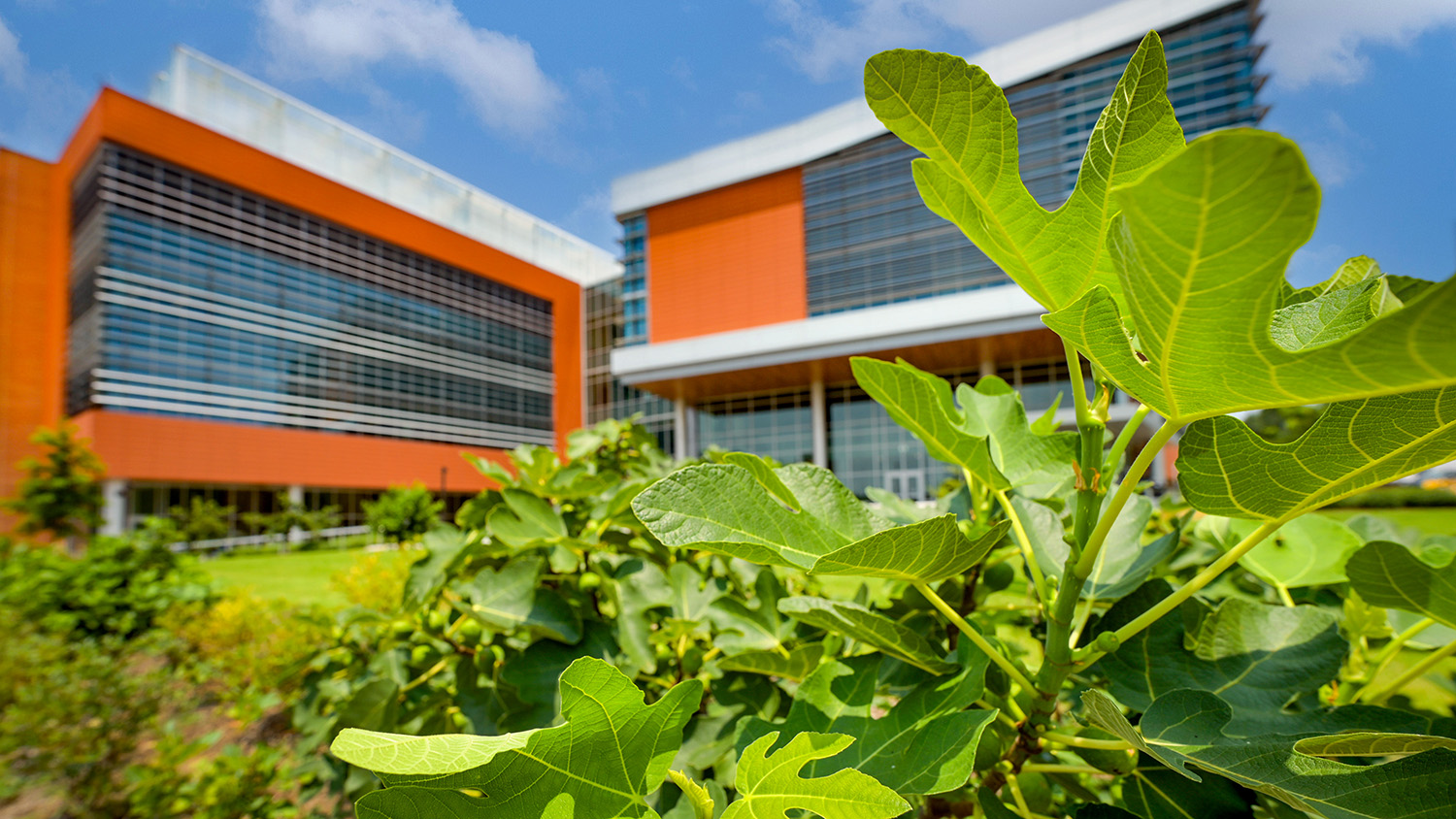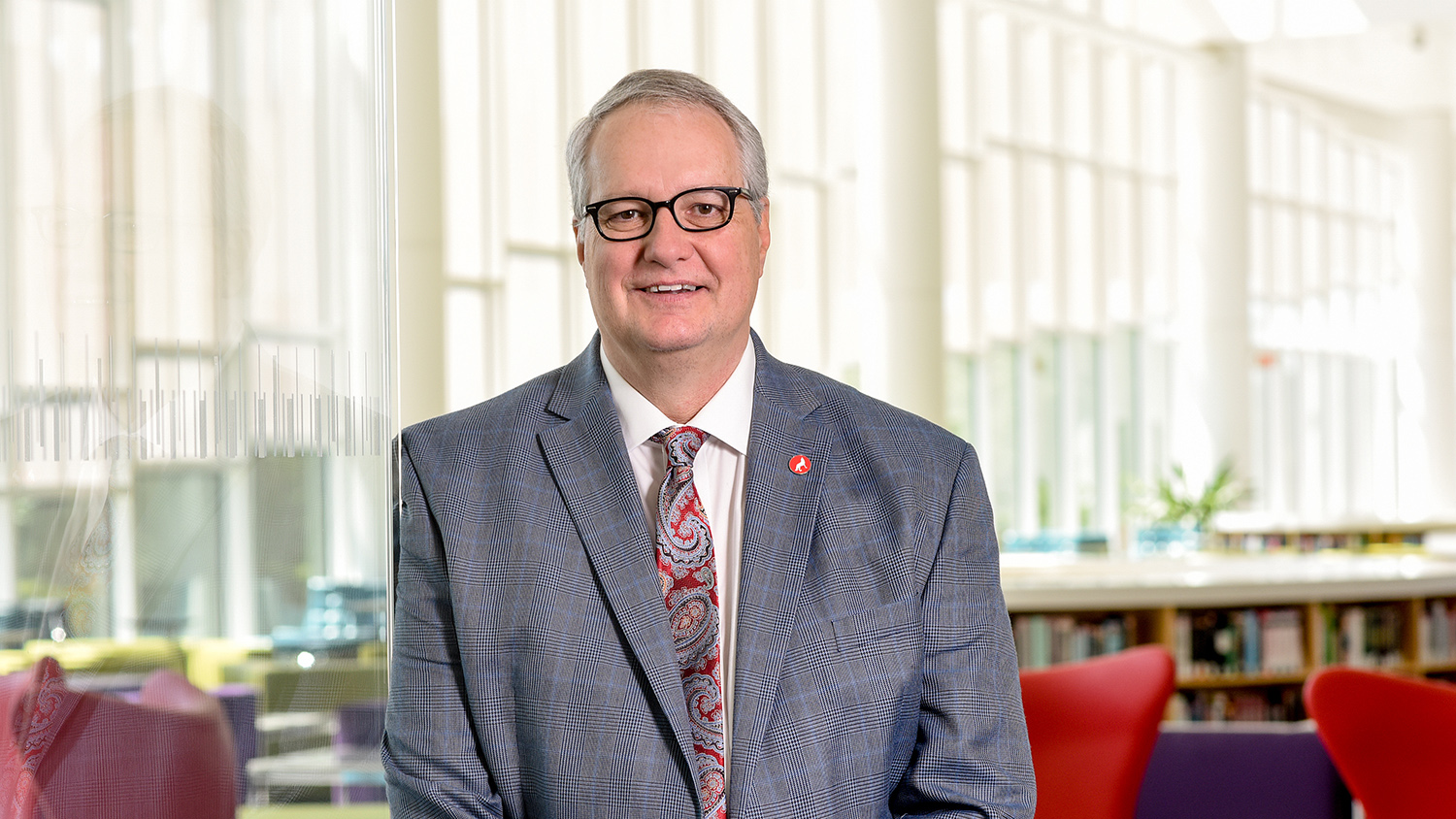The North Carolina Museum of Natural Sciences seeks to travel 67 million years in the past with its upcoming Dueling Dinosaurs exhibit. Tyrannosaur and Triceratops fossils will help make paleontologists out of visitors thanks in part to a fruitful partnership between NC State and the museum.
Six joint-appointed faculty engage in scholarship and help educate the nearly 1 million members of the public who visit the museum each year. They’ve helped set the stage for engaging, interactive experiences, including an exciting new dinosaur exhibit that opens on April 27.
Dueling Dinosaurs Fast Facts
- The Dueling Dinosaurs exhibit focuses on a fossil with the skeletons of a tyrannosaur and a Triceratops.
- The fossils in the exhibit were discovered in 2006 in Montana.
- Visitors will design their own dinosaur by comparing it to living animals. They will also have a sensory experience of the paleontology process as it happens in the lab.
- Visitors can use CT scan data to figure out what sounds a dinosaur could hear, and will touch and feel different kinds of fossils.
- Visitors will be able to see what’s happening live in the lab, which was designed so that fossils can be craned in and out through the window in the lab.
Putting Science on Display
NC State’s University-Museum Partnership, part of the Office of University Interdisciplinary Programs, artfully showcases science to the public and helps make exhibits like Dueling Dinosaurs possible. The university and museum partner to bring researchers, students and the public together to explore and understand our world through a variety of interdisciplinary lenses.
“The partnership began with the University-Museum joint appointment of renowned paleontologist Dale Russell in 1995 and continued with his 2003 successor,
Mary Schweitzer, who would turn the field of paleontology on end with her disruptive
discovery of soft tissue in a 68-million year old T. rex fossil,” said Dan Solomon, emeritus dean of the College of Sciences. “Today, faculty and students from across the university are now deeply engaged with the museum, using the venue and the staff to gain experience and skill in communicating science to public audiences.”
The first of the current joint-appointee faculty were hired in 2012. Around that time, Betsy Bennett, then director of the North Carolina Museum of Natural Sciences, envisioned an innovative program that would create opportunities for faculty to build a strong presence at the museum’s Nature Research Center. This would include positions involving a significant amount of public engagement and outreach. Bennett then reached out to Dan Solomon, then dean of NC State’s College of Physical and Mathematical Sciences (now the College of Sciences), and they worked together to create these opportunities for several NC State faculty.
The University-Museum Partnership is the first-of-its-kind program to position university researchers in truly transparent, open-to-the-public research spaces within the museum. The public can see research occurring in real time and engage directly with the researchers to hear from them about what they’re doing and why it matters. Much of the research that has historically occurred in museums is not visible to the public.
And, traditionally, museum researchers (who don’t have a joint appointment with a university) do not have the opportunity to teach university courses and advise/mentor university students the way the joint appointees do. The partnership also dramatically increases opportunities for joint-appointee faculty to conduct public engagement and outreach work in settings that many university researchers don’t typically experience.
“Our driver is the opportunity that the partnership provides to emphasize “public science” across our teaching, research and outreach programs; to broadly engage the (diverse public(s) in participating in and advancing science and to enable the next generation of scientists, whom we are preparing, to see that as part of their professional responsibility,” said Jory Weintraub, director of science engagement for the Office of University Interdisciplinary Programs. “For the museum, this partnership provides the needed salary support and access to NC State people and other resources. The partnership is also win-win in that the successes and reputations of the joint appointees accrue to both institutions.”
Joint-Appointed Faculty
Today, six NC State faculty maintain a joint appointment with the North Carolina Museum of Natural Sciences. They are:
- Paul Brinkman, associate teaching professor in the Department of History in the College of Humanities and Social Sciences; head of the Environmental Humanities Research Lab and curator of Special Collections at the NC Museum of Natural Sciences
- Lily Hughes, assistant research professor in the Department of Marine, Earth and Atmospheric Sciences in the College of Sciences; research curator in the Division of Ichthyology at the NC Museum of Natural Sciences
- Roland Kays, associate research professor, Department of Forestry and Environmental Resources in the College of Natural Resources; director of the Biodiversity Research Lab at theNC Museum of Natural Sciences
- Liz Kierepka, assistant research professor in the Department of Forestry and Environmental Resources in the College of Natural Resources; senior research biologist in the Biodiversity Research Lab at the NC Museum of Natural Sciences
- Adrian Smith, assistant research professor in the Department of Biological Sciences in the College of Sciences; head of the Evolutionary Biology and Behavior Research Lab at the NC Museum of Natural Sciences
- Lindsay Zanno, associate research professor in the Department of Biological Sciences in the College of Sciences; head of the Division of Paleontology at the NC Museum of Natural Sciences
Adrian Smith started his joint appointment in 2016. A research biologist interested in animal behavior and communication, Smith also produces science media (YouTube channel Ant Lab) and studies how science is communicated to public audiences.
Q&A with Adrian Smith
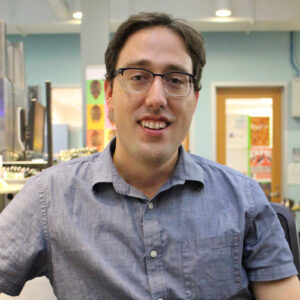
What are the focal points of your research, and what are you currently working on?
My research focuses on insect behavior and science communication. Currently my students, collaborators and I are working on springtails, cockroaches and fleas. The projects are focused on how those arthropods move and how their locomotory adaptations interface with behavior and ecology. My communication work focuses on studying how science is communicated through online media, exploring what we can learn through experimental social science and surveying practices of science communicators and institutions.
How did you become a joint-appointed faculty member?
I joined the NC Museum of Natural Sciences and NC State’s Department of Biological Sciences in 2016, being hired as a joint-appointed faculty member.
In what ways does being in this position give you opportunities to engage with NC State students?
All of the undergraduate, graduate and post-doctoral researchers I have worked with in my lab have come in through NC State. Undergraduate and graduate students take classes at NC State and then come down to the museum to do their research projects there. I also teach graduate and undergraduate classes at the university. My longest running class is a graduate student class called “Creative Media Production for Scientists,” which focuses on equipping NC State science graduate students with the skills and knowledge for creating online public-oriented videos about their science.
How does NC State’s relationship with the Museum of Natural Sciences help make your research more visible?
The partnership with NC State means that myself and my students have access to all the research expertise and facilities at the university to keep doing impactful work. Through the museum, we are able to bring that work to people on a near daily basis.
Does your appointment provide you ways to expand science communication to the general public?
The museum’s mission is to both do science and make science accessible and inspiring to a public audience. So, in my museum lab, we echo the mission of the institution and do just as much public engagement as we do research. Our YouTube channel, Ant Lab, reaches around 20 million people each year. We have produced broadcast television segments for the PBS-NC show SciNC for the past four seasons. And our collaborative art-based projects have produced pieces for National Geographic and natural history museums in the U.S. and abroad. We’ve made it our goal to re-think how basic research biology can be done with the public interest in mind. Being housed in an institution that shares those core goals just makes sense.
What’s a fun fact about your research that people may not know?
We’re wrapping up some work on globular springtails at the moment and these tiny arthropods, which are likely in your backyard, do the fastest known backflip. When they jump they spin backwards at rates upwards of 370 flips/sec.
Through the joint-appointed faculty, the Dueling Dinosaurs exhibit, and many other avenues for scientific discovery and communication come to life. When higher education institutions and museums work together, faculty, students and the general public all benefit.
- Categories:
